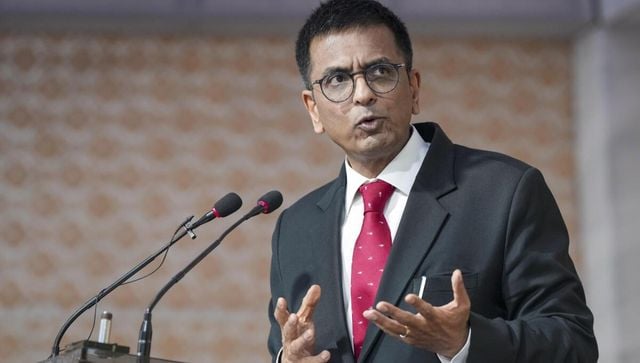AI to transcribe Supreme Court hearings in India: How will this work?
AI to transcribe Supreme Court hearings in India: How will this work?

The Supreme Court has taken another step towards becoming more accessible and technology-friendly. For the first time, the apex court has employed Artificial Intelligence (AI) and technology driven by Natural Language Processing to transcribe its hearings live.
The project, running on an experimental basis, has been launched in the courtroom of Chief Justice of India (CJI) DY Chandrachud for now, reported PTI.
The CJI is currently presiding over a five-judge constitution bench hearing the case regarding the political crisis in Maharashtra.
“Do you see the screen? We are trying to explore live transcription of our proceedings and we will do it on an experimental basis with this case. If the experiment works well, we will have a permanent record of the arguments. This will not only help the lawyers but also the students from law colleges who can know how these important cases were argued before the Supreme Court,” CJI Chandrachud said on Tuesday (21 February) announcing the initiative, according to Hindustan Times.
How will this project work and what steps has the top court taken recently to become tech-savvy? Let’s take a closer look.
How does it work?
As per ThePrint, a screen displaying the live transcription of the court proceedings has been put up in courtroom number 1 – the CJI’s court – facing the lawyers.
This transcription service to the apex court is being provided by Teres, a platform that supplies this facility to arbitration practitioners, and is run by Nomology Technology Private Limited, a Bengaluru-based company.
Earlier, this facility was used during the Delhi Arbitration Weekend organised from 17-19 February.
Explaining how the live transcription would work, CJI Chandrachud said, “If there are two or more voices at the same time that causes a little bit of a problem. But they have personnel who will clean up the errors by the evening.”

The transcript will be made available to the lawyers for corroboration and uploaded on the Supreme Court website every evening, the CJI said.
Welcoming the move, Justice PS Narasimha said: “This court will then be truly a court of record. Every word, every argument will be recorded and will be there for all times to come.”
Senior advocate Kapil Sibal, who was present in the courtroom on Tuesday, called it a “milestone and wonderful decision”.
With this, India has joined the list of countries that offer court transcripts.
The US Supreme Court also provides audio and text transcripts of its hearings. Several local courts in America also make a stenographic record of most court proceedings, as per Hindustan Times.
In the United Kingdom, litigants can get the transcript of the recorded court hearings after paying a fee.
How it came to be?
Last month, senior advocate Indira Jaising implored the top court to make audio transcripts available of live proceedings.
She also suggested providing the link for live streaming of hearings. Moreover, Jaising advised that in addition to constitution bench hearings, a mechanism should be created to live stream proceedings of other important matters.
The Supreme Court asked her to submit a detailed note with her suggestions “so that they can be taken into account when modalities for live streaming are formulated”, reported ThePrint.
Recent tech reforms in the apex court
The new development comes months after the Supreme Court started live-streaming its proceedings in crucial Constitution Bench cases in a push for transparency and public access.
In January this year, CJI Chandrachud launched the electronic Supreme Court Reports (e-SCR) project to provide the apex court judgements in various Indian scheduled languages.
The CJI has also rolled out an online portal for lawyers to mark their presence in cases.
A panel has been set up recently to translate the apex court’s judgments into regional languages. As per Hindustan Times, 3,132 judgments translated into local languages are available so far.
Last November, CJI Chandrachud introduced an online Right To Information (RTI) portal to aid people in filing and accessing information about the top court.

These steps come amid CJI Chandrachud, who also heads the Supreme Court’s e-Committee, stressing on the need for technology to make justice more accessible.
“Technology has become a powerful tool in the legal system, improving efficiency, accessibility and accuracy in the administration of justice,” he had stated earlier.
“The judiciary has the unenviable task of delivering justice in a period of both challenges and ground-breaking opportunities. The IT revolution constitutes a resource that has changed the way we work together and envisage the justice delivery mechanism,” the CJI had said, as per News18.
With inputs from agencies
Read all the Latest News, Trending News, Cricket News, Bollywood News,
India News and Entertainment News here. Follow us on Facebook, Twitter and Instagram.
What's Your Reaction?



























































